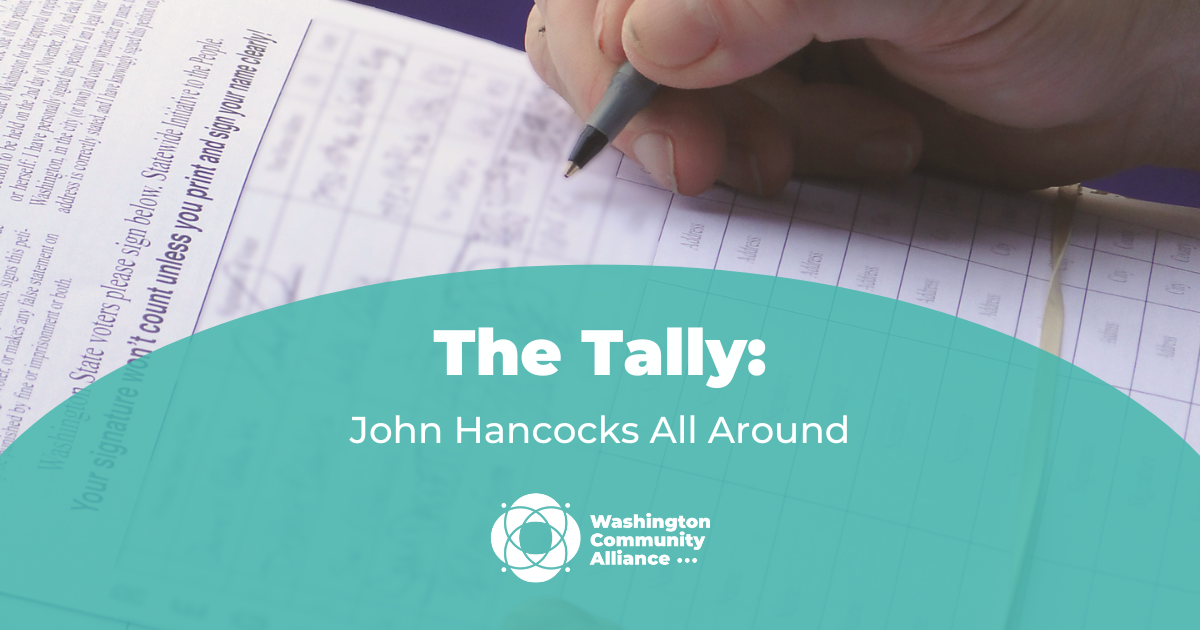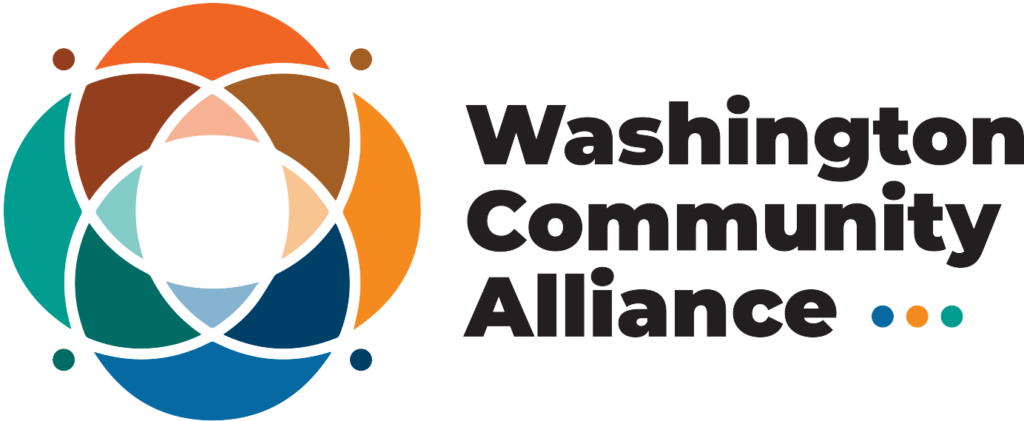
Beloveds–
The hummingbirds are zipping around colorful feeders. Lilacs are in bloom. Signs of summer abound. Speaking of signs, we’re entering peak signature-gathering season. You can’t go to the farmers’ market without an eager beaver with a clipboard at the entrance. Last time, we covered what’s on the ballot this year. This week, we’re gonna tell you about how Ballot Initiatives get made—particularly, what goes down on the shady side of signature gathering. We’ve broken it down for you below, and given you a cheat sheet on what not to sign this year.
To Sign or Not to Sign
It’s worth doing the research before you sign–but here’s the TL;DR:
🛑 DON’T SIGN:
- Anything sponsored by Larry Jensen or Jim Walsh. That includes potential initiatives 2021, 2022, 2023, 2024, 2025, 2026, 2029, 2030, 2033, 2034, 2035, 2036, 2037, 2044, 2046, 2048, 2051, 2052, 2053, 2054, 2055, 2056, 2057, 2058, 2059, 2069, 2070. Jensen and Walsh have been busy cooking up nonsense. The good news is that it’s virtue signaling to their base, and they won’t be gathering signatures. When in doubt, ask if Walsh or Jensen sponsored. If they did, steer clear.
- Sheets that don’t list Top 5 Donors. Campaigns are required to list their top 5 donors on their signature gathering sheets. If you don’t see them listed, start asking questions.
A few measures have already qualified. Remember to vote No on these come November.
The Basics of
FILING: Filing an initiative is the opening salvo of the political drama that is the campaign—who files sets the tone (this year, Brian Heywood has clearly fashioning himself the savior of the Right). On the actual policy side of things, the initiative heads to the code reviser— the bill drafting arm of the Washington legislature—who reviews the measure and recommends language that gets incorporated into the final filing by the sponsor.
BALLOT TITLE: The Attorney General’s office is responsible for issuing a ballot title for the initiative along with a concise description of what it does. This is the summary voters see when casting their vote. This language is important–we’ll get to that later!
SIGNATURE GATHERING + VERIFICATION: A ballot initiative needs to gather signatures equivalent to 8% of voters in the last gubernatorial election. That’s 325K signatures. Rule of thumb: campaigns gather about 20% more, for a total of 390K signatures becayse the Secretary of State invalidates ~15% for a variety of reasons.
CERTIFICATION: When ballot measures are certified, they get put in the voter’s pamphlet and the Attorney General’s office, as of very recently, also adds a fiscal disclosure statement.
VOTE: Either Washington voters or legislators vote to approve ballot measures that qualify!
Leave the Cannoli, Take the Signature
That’s the formal process that happens in full view. But let’s look a little closer at step 3. It’s time to go to the mattresses. Your campaign needs nearly 390K signatures. How?
We’d love to tell you that principled retirees and enthusiastic young people mount a massive volunteer effort to ensure their measure makes it to voters. But, in most cases, we’d be lying. The reality is a whole lot murkier. While campaigns do rely on volunteer signature gatherers, they often hire paid gatherers to supplement their efforts.
Paid signature gatherers are migratory workforce who swing north from California to Washington before winding their way to Michigan for the next round of gathering. Paid signature firms charge per signature and during even election years—when voter turnout is high and there are more initiatives on the ballot—the costs skyrocket.
In Washington, campaigns have paid up to nine dollars per signature (quick maths: that’s over $3M just to start!). The paid signature gathering marketplace looks more like a scene out of The Godfather than The West Wing and the dons of signature gathering are cashing in. Sometimes, getting paid in duffel bags of cash in shady motel rooms (seriously, that’s happened). There’s no actual murder afoot (that we know of), but they’re making a killing. As the clock ticks towards deadline, they make you an offer you can’t refuse.
Of course, only big campaigns and monied interests can afford the big bucks. Take this year’s Initiative 2066. A lil’ bird told us the corporations set on deregulating natural gas on this year’s ballot might spend $7M dollars to gather enough signatures before July 5th. Deep pocketed oil and gas tycoons might be able to afford $1-2M per week, but community ballot initiatives like Initiative 137, a social housing measure led by House Our Neighbors, rely on volunteers and staff to bring critical services and infrastructure to the community. That’s the thing about the mob. At the end of the day, it comes down to money—not what’s good for people.
What’s the Attorney General Got to Do, Got to Do With It?
As we mentioned, the Attorney General’s office is responsible for two important pieces of the process: the ballot title and the fiscal impact statement.
The ballot title is arguably the single most important indicator of the success of an initiative. Most voters cast their vote based on title alone. Titles are so critical that it’s common practice to rapidly conduct a poll on the ballot title the week it is issued. It’s possible to challenge a title—and many campaigns do if they poll poorly! That’s why there’s a real strategy that goes into ensuring a good ballot title from go.
The Attorney General’s office is required to draft a title that roughly mirrors the initiative itself. This means the ballot title should spend roughly the same percentage of space on each topic as the initiative does. If an initiative isn’t carefully drafted, this can have damning impacts for progressive ballot measures.
Consider something like the capital gains tax. An initiative on capital gains might spend pages and pages describing the mechanism of the tax—how it works, who it impacts. And that’s incredibly important! But the initiative might spend only a page on how the revenue it generates will be spent—supporting public education. An initiative drafted in this way would result in a ballot title heavily focused on how the tax is administered rather than the good it will do. A title like that can make voters uncertain. Folks drafting initiatives often have to think hard about how to emphasize the brownie—funding for our school kids!—rather than the recipe—seven percent, administered annually, assets, annuities, derivatives, income over….you get the idea.
Speaking of revenue, the other important piece of the puzzle the Attorney General oversees is the fiscal impact statement. This is an assessment—conducted by the AG in consultation with any relevant state agencies—that describes any projected increase or decrease in revenues, costs, expenditures, or indebtedness that the state or local governments will experience if the ballot measure were approved by state voters. In other words, it tells voters the bottom line of the initiative. Will it gut revenue? Lead to service cuts? Bring a new program to the state? This, along with the title, determines most voters’ decision.
We won’t see titles and impact statements until July. So the juicy bits are yet to come.
What do you think? Have any questions? Tweet us your thoughts @WACommAlliance.
Keep up on the action and opportunities to get involved through our legislative newsletter, The Tally.

